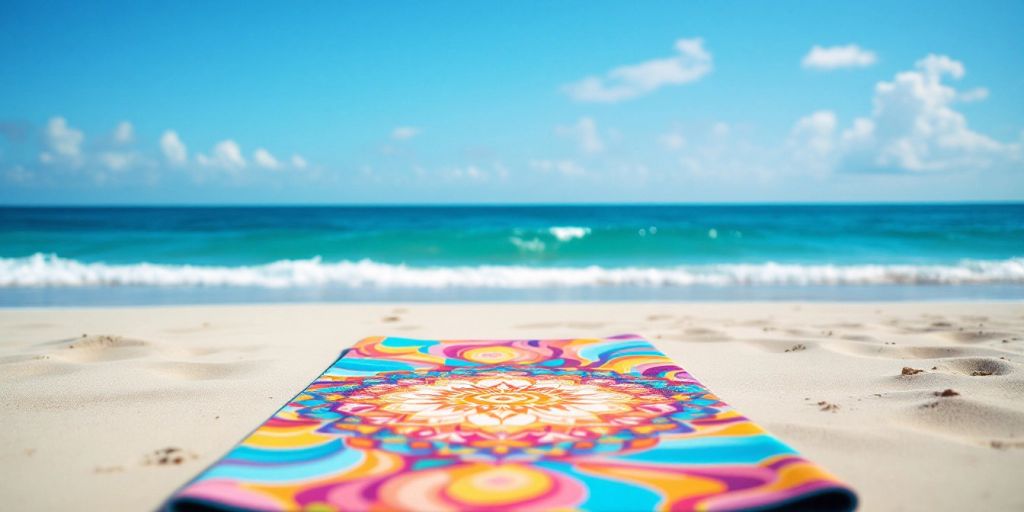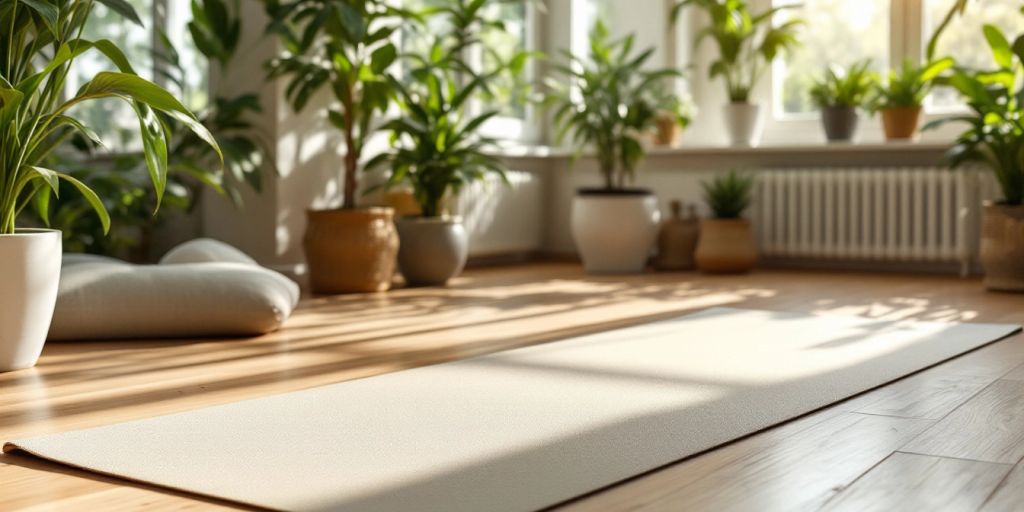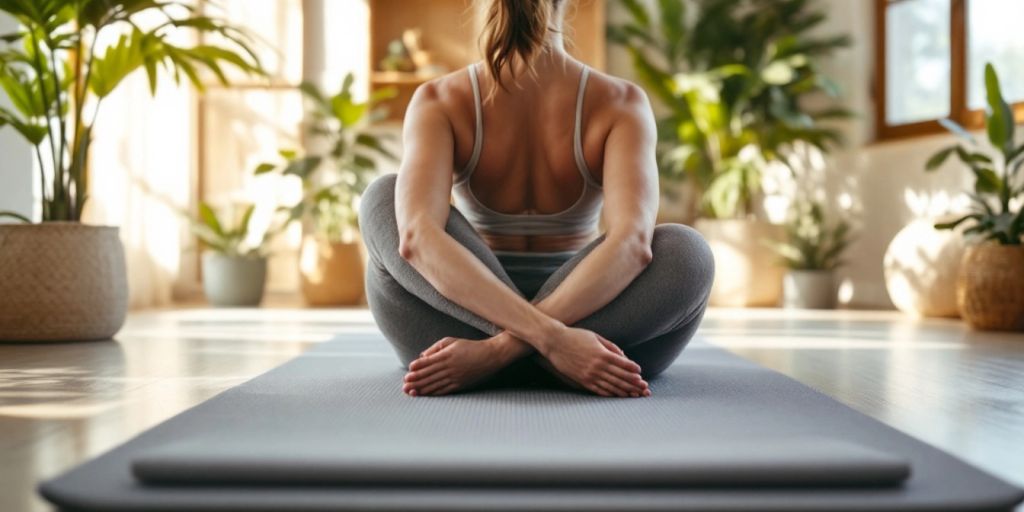
Discover the Best Beach Yoga Mat for Your Perfect Outdoor Practice
Practicing yoga outdoors can be a refreshing experience, especially when you have the right gear. A specialized beach yoga mat is essential for ensuring comfort and stability on sandy surfaces. In this article, we will explore key aspects of selecting the best beach yoga mat for your outdoor sessions, including materials, portability, and sustainability.
Key Takeaways
- A beach yoga mat should be durable and weather-resistant to handle outdoor conditions.
- Lightweight mats are easier to carry and transport to different locations.
- Look for mats that provide good grip and comfort for various yoga poses.
- Eco-friendly materials are a great choice for environmentally conscious yogis.
- Compare prices and features to find the best beach yoga mat that fits your budget.
Understanding the Importance of a Beach Yoga Mat
Practicing yoga on the beach can be a wonderful experience, but having the right mat is essential. A specialized beach yoga mat can significantly enhance your outdoor practice. Here’s why it matters:
Why a Specialized Beach Yoga Mat Matters
- Stability: A good beach mat provides a non-slip surface, which is crucial for maintaining balance on uneven sand.
- Comfort: Specialized mats are designed to offer cushioning, making your practice more enjoyable.
- Durability: Beach mats are often made from materials that resist wear and tear from sand and saltwater.
Key Features of Beach Yoga Mats
When selecting a beach yoga mat, consider these key features:
- Material: Look for eco-friendly options that are also durable.
- Texture: A textured surface can improve grip, especially in humid conditions.
- Weight: Lightweight mats are easier to carry to the beach.
Benefits of Using a Beach Yoga Mat
Using a beach yoga mat offers several benefits:
- Enhanced Grip: Non-slip surfaces help you stay stable during poses.
- Easy to Clean: Many beach mats are designed to be moisture-resistant and easy to wipe down.
- Connection with Nature: Practicing on a mat that feels good underfoot can deepen your connection to the environment.
Remember, the right mat can enhance your practice and connect you with nature!
Top Materials for Beach Yoga Mats
When selecting a beach yoga mat, the material is a key factor that can greatly influence your practice. Here are some of the top materials to consider:
Eco-Friendly Options for Conscious Yogis
- Natural Rubber: Known for its durability and grip, natural rubber mats are eco-friendly and provide excellent cushioning. However, they can be heavier and may not suit those with latex allergies.
- Cork: Cork mats are made from sustainable materials and offer a non-slip surface. They are lightweight and naturally antimicrobial, making them ideal for outdoor use.
- TPE (Thermoplastic Elastomer): This material is biodegradable and offers a good balance of comfort and grip. It’s also lightweight and easy to clean.
Durability and Comfort in Different Materials
| Material | Durability | Eco-Friendliness | Weight |
|---|---|---|---|
| Natural Rubber | High | Moderate | Heavy |
| Cork | Moderate | High | Light |
| PVC | High | Low | Light |
| TPE | Moderate | High | Light |
Waterproof and Sand-Resistant Choices
- PVC: While PVC mats are durable and affordable, they are not the most eco-friendly option. They can withstand various outdoor conditions but may contain harmful chemicals.
- Sand-Resistant Materials: Some mats are designed specifically to resist sand, making them easier to clean after a day at the beach.
Choosing the right material is essential for a satisfying outdoor yoga experience. A durable, portable, and eco-friendly mat can enhance your outdoor experience and keep you connected to your yoga journey.
Choosing the Right Thickness for Your Beach Yoga Mat
Balancing Comfort and Portability
When selecting a beach yoga mat, thickness is key. A thickness of 1/4 inch or more is usually best for outdoor mats. This offers good cushioning and support for various poses. Here are some common thickness options:
- 1-2 mm: Thin mats, great for travel but less cushioning.
- 3-5 mm: Ideal for balance and joint support, suitable for most practices.
- 6 mm and up: Provides extra cushioning, perfect for those with joint pain or for restorative yoga.
Ideal Thickness for Different Surfaces
Different surfaces require different mat thicknesses. Here’s a quick guide:
| Surface Type | Recommended Thickness |
|---|---|
| Sand | 4-6 mm |
| Grass | 3-5 mm |
| Hard surfaces | 6 mm and up |
How Thickness Affects Your Practice
The thickness of your mat can significantly impact your practice. Here are some effects to consider:
- Cushioning: Thicker mats provide more comfort for your joints.
- Stability: Thinner mats can offer better stability for balance poses.
- Weight: Thicker mats are usually heavier, which can affect portability.
Choosing the right thickness for your beach yoga mat can enhance your practice and make outdoor sessions more enjoyable. Consider your personal needs and the surfaces you'll be practicing on to find the perfect fit!
Portability and Convenience in Beach Yoga Mats
When practicing yoga outdoors, portability is essential. You want a mat that is easy to carry while still being comfortable and functional. Here are some key points to consider:
Lightweight Mats for Easy Transport
- Look for mats that weigh between 1-3 pounds for easier carrying.
- The Oak Trekk Travel Mat, for example, weighs only 2.0 lbs and is designed for easy transport.
- Thinner mats are lighter but may not provide enough cushioning for your practice.
Foldable vs. Rollable Mats
- Foldable mats can save space and are often easier to pack.
- Rollable mats are more common and can provide better support during practice.
- Some mats come with straps for easy carrying, making them more convenient.
Balancing Thickness and Portability
- A thicker mat (around 4-6 mm) offers more comfort but can be heavier.
- A thinner mat (around 2 mm) is lightweight but may not be as supportive.
- Finding the right balance is crucial for your practice and travel needs.
Choosing the right mat can enhance your outdoor yoga experience. A lightweight, portable mat allows you to practice anywhere, making it easier to stay connected to your routine while on the go!
Enhancing Your Practice with the Best Beach Yoga Mat

Improving Stability and Grip
To truly enjoy your beach yoga sessions, having a mat that offers excellent grip is essential. Here are some key points to consider:
- Non-slip surfaces: Look for mats with textured surfaces to prevent slipping, especially on wet sand.
- Material choice: Natural rubber or high-quality PVC can provide better traction.
- Weight distribution: A mat that distributes weight evenly helps maintain balance during poses.
Adapting to Weather Conditions
Practicing yoga outdoors means facing various weather elements. Here’s how to choose a mat that can handle it:
- Water resistance: Opt for mats that repel moisture to keep your practice dry.
- UV protection: Some mats are designed to resist fading and damage from sunlight.
- Temperature tolerance: Choose materials that remain comfortable in both hot and cool conditions.
Aligning Your Mat Choice with Your Yoga Style
Different yoga styles may require different mat features. Consider the following:
- Thickness: Thicker mats provide more cushioning for restorative practices, while thinner mats offer better stability for balance-focused styles.
- Length and width: Ensure the mat is long and wide enough for your movements.
- Eco-friendliness: If sustainability is important to you, look for mats made from recycled or natural materials.
Choosing the right beach yoga mat can significantly enhance your practice, making it more enjoyable and effective. In summary, the best beach yoga mat should improve your stability, adapt to weather conditions, and align with your yoga style. Remember, investing in a quality mat can elevate your outdoor yoga experience, allowing you to connect with nature while practicing your poses.
For those looking for recommendations, consider checking out the 7 best yoga mats of 2024 that have been tested and rated for their support and performance.
Top-Rated Beach Yoga Mats on the Market

Customer Reviews and Satisfaction
When it comes to choosing the best beach yoga mat, customer feedback is essential. Here are some top-rated options based on user satisfaction:
| Product Name | Rating | Price |
|---|---|---|
| Manduka PRO | 91 | $138 |
| Manduka eKO | 87 | $100 |
| Lululemon The Mat | 84 | $98 |
| B Yoga B Mat Everyday | 78 | $96 |
| Iuga Eco Friendly Non Slip | 75 | $67 |
| Yoloha Unity Cork | 75 | $159 |
Comparing Popular Brands
Here are some popular brands that stand out in the market:
- Manduka: Known for durability and comfort.
- Lululemon: Offers stylish designs and great grip.
- Iuga: Eco-friendly options that are budget-friendly.
- Yoloha: Unique cork material for a natural feel.
Finding the Best Value for Your Budget
When looking for a beach yoga mat, consider these factors to get the best value:
- Material: Choose eco-friendly and durable materials.
- Thickness: Ensure it provides comfort without being too heavy.
- Portability: Look for lightweight and easy-to-carry options.
A good beach yoga mat can enhance your practice by providing stability and comfort, making your outdoor sessions more enjoyable. The right choice can transform your yoga experience!
Sustainability and Environmental Impact
Choosing Eco-Conscious Brands
When selecting a beach yoga mat, it's important to consider eco-friendly options. Here are some tips:
- Look for mats made from sustainable materials like natural rubber, jute, or organic cotton.
- Check for certifications that indicate the mat is free from harmful substances, such as OEKO-TEX.
- Support brands that prioritize sustainable practices in their production processes.
The Role of Sustainable Materials
Using sustainable materials helps reduce your environmental footprint. Here are some benefits:
- Biodegradable: Many eco-friendly mats break down naturally, reducing landfill waste.
- Renewable Resources: Materials like natural rubber are sourced from renewable resources.
- Less Chemical Use: Eco-friendly mats often contain fewer harmful chemicals, making them safer for you and the planet.
Long-Term Benefits of Eco-Friendly Mats
Investing in an eco-friendly mat not only supports your yoga practice but also contributes to a healthier planet. Here are some long-term benefits:
- Durability: Many eco-friendly mats are designed to last longer, reducing the need for frequent replacements.
- Healthier Environment: Choosing mats made from natural materials can lead to a cleaner environment.
- Positive Impact: Every small step counts towards sustainability, making a difference in the world.
Remember, selecting an eco-friendly mat is a step towards a more sustainable lifestyle. It’s not just about your practice; it’s about caring for our planet too!
Final Thoughts on Your Outdoor Yoga Mat Journey
Choosing the right yoga mat for outdoor practice is really important for enjoying your time on the mat. Think about what matters most to you, like how strong the mat is, how easy it is to carry, and how comfortable it feels. If you want a tough and high-quality mat, the Manduka PRO is a great option. For those who care about the environment, the Liforme and Yoloha Cork mats are excellent choices. If you're on a budget, the Gaiam Essentials mat gives you good support without costing too much. Lastly, if you want a mix of comfort and easy transport, the Jade Yoga Harmony Mat is a solid pick. Take your time to check out these options and find the mat that fits your needs. Remember, every time you practice, you’re taking steps toward peace and balance in your life. Enjoy your practice!
Frequently Asked Questions
What should I consider when buying a beach yoga mat?
When choosing a beach yoga mat, think about its weight, durability, comfort, and how easy it is to carry. A good mat should handle sand and moisture well.
Are beach yoga mats heavier than regular yoga mats?
Yes, many beach yoga mats are a bit heavier because they are made with thicker materials that are more durable. But there are lightweight options too.
Can I use my regular yoga mat on the beach?
It's not recommended. Regular mats may not handle sand and moisture well, and they might not provide enough grip on uneven surfaces.
How do I clean my beach yoga mat?
You can clean your beach yoga mat by wiping it down with a damp cloth and mild soap. Make sure to let it dry completely before storing it.
What thickness is best for a beach yoga mat?
A thickness of about 5mm to 8mm is usually good for beach yoga mats. This provides comfort while still being portable.
Are eco-friendly beach yoga mats available?
Yes, there are many eco-friendly beach yoga mats made from sustainable materials. Look for mats that are labeled as eco-friendly or biodegradable.


